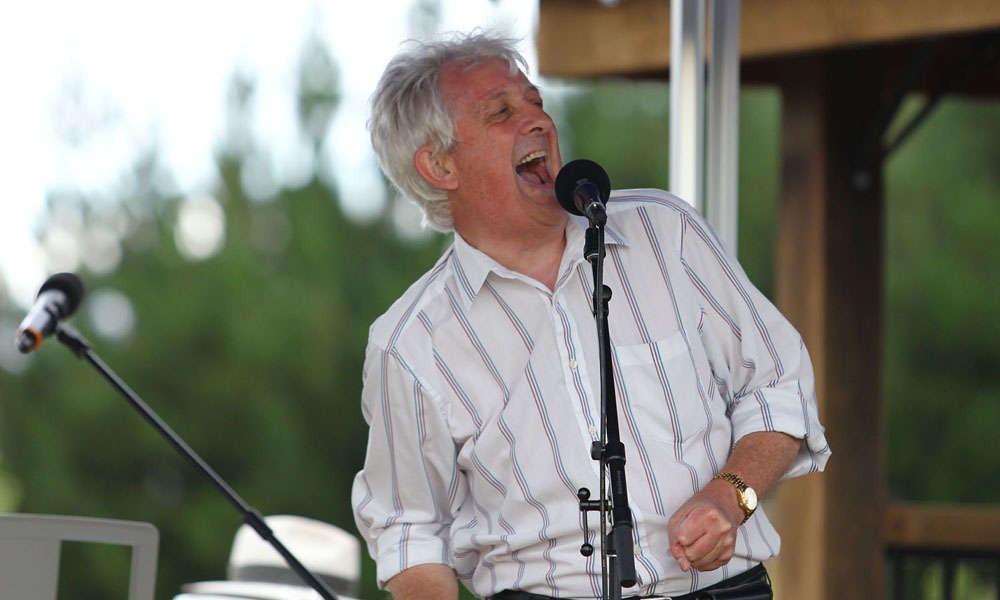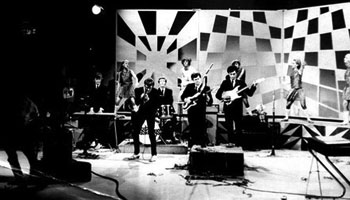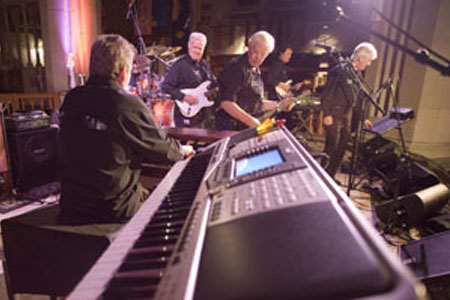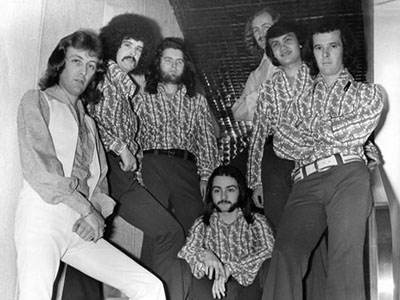
Peter Nelson

 |
Peter Nelson |
 |
First Name · · Last Name
Last Name · · Groups
Groups · · Venues
Venues · · Events
Events · · Entities
Entities · · Submit
Submit · · e-Mail
e-Mail · · Links
Links · · Search
Search |
 |
 FRENZY Album July 2024 |
   Peter Nelson Collection |
Peter Nelson still at his best at Flaxwood Festival 2012 |
 The last iteration of The Diamonds - at The Safari Lounge (Christchurch) |
  |
 Back at The Safari Lounge (Christchurch) after their first jaunt to Sydney |
Once established in Wellington, Peter Nelson and the Castaways played locally and appeared on the local TV show Teen Scene. The new band got its break at the end of 1964 when Ken Cooper of Prestige Promotions booked them to play at the Nelson Sports Hall for Christmas and New Year - also on the bill was Wellington country singer Jim McNaught, whose "Long Tall Texan" was a hit on HMV. The group was spotted by a scout for HMV and immediately signed up to an HMV recording contract. Come 1965 they were in Wellington and in an HMV recording studio laying down their first single Baby Can I Take You Home // I'll Never Be Blue, (a Gary Thain original). Sundays were spent on stage at either the Taita or Porirua Youth Club. More recording sessions would follow, the first of which delivered the single I'll Go Crazy // Down the Road Apiece (with Don Clarkson in the vocal slot), after which Don left, to be replaced by Doug Rowe, and very soon thereafter, organist Peter Gillette (who had been playing in The Opposition at The Plainsman when Peter Nelson and The Castaways left Christchurch), would join them in Wellington on the VOX Continental Organ. |
 Peter Nelson + Castaways - HMV Publicity Shot |
 Peter Nelson + Castaways - HMV Publicity Shot |
 Peter Nelson + Castaways - EMI Australia Publicity Shot |
The next recording session delivered Down in the Mine // So Don't Go. This last single was an all Kiwi affair with Premiers' bassist Peter Hindmarsh having written Down in the Mine, and new bassist, Doug Rowe's So Don't Go. After this they moved to Sydney where they were very well received. They came back to New Zealand later and played in Auckland, Christchurch (Safari Lounge) as well as Timaru, before returning to Sydney, which explains the photo at The Safari Lounge with Peter Gillette in the band, he having joined after the group left Christchurch for the lights of Wellington. Whilst in Sydney, a further change occurred with Doug Rowe leaving the group. and this necessitated Doug Henderson's move to playing bass. |
||
 Peter Nelson + The Castaways |
 Peter Nelson + The Castaways - Live on Australian TV |
 Peter Nelson + The Castaways |
In the latter part of 1966, Peter Nelson and The Castaways moved permanently to Sydney from where Peter Nelson left in 1967 to try his luck in the Asian market. The remaining Castaways replaced him with Frankie Stevens on vocals, changed the band's name to simply The Castaways, and continued as a major club band in Australia for some time. There were still two singles to be released as Peter Nelson and the Castaways — Knock On Wood // Old Man Mose and At A Time Like This // A Little Lovin' Somethin' and both saw the light of day in 1967. As the Castaways they released the singles Any Little Bit // Early Morning in 1967 and One More Fool // Baby What I Mean and Angelica // Love Is A Hurtin' Thing for EMI in Australia before returning to New Zealand in 1968. During their later time in Australia, Lenny Ormsby was replaced by Reno Tehei, Doug Petrie by ex-Twilights drummer Laurie Pryor, and Peter Gillette by Lance Dixon. |
 |
Back to the future — more recently Peter Nelson and The Castaways got themselves back together for the Spencer Street Revisited Concerts in Christchurch Cathedral in September of 2006, and for the first ROCKONZ Concert in the Christchurch Town Hall in 2007. On both accasions, Peter Gillette featured on a genuine old L-100 Hammond Organ (thanks to Kevin Frewer allowing the old girl to come out of retirement for those nights). The line-up, however, was one that never had previously existed with both Peter Gillette (Organ) and Don Clarkson (Bass) in the group at the same time. |
 SSR Concerts - Christchurch Cathedral 2006 |
 ROCKONZ Christchurch Town Hall 2007 |
 ROCKONZ Christchurch Town Hall 2007 |
Peter started his Asian work-out in Bangkok in 1968 and spent 3 months gigging on US Military Bases around Thailand before flying to Hong Kong to join Little Sammy and the In People as their lead singer, playing at The Den in the Hilton Hotel on Hong Kong Island, but after things went wrong, was lucky to be offered work with local favourite band The Lotus, with whom he had performed on Hong Kong TV in his first month in the colony. Within weeks Peter and The Lotus were playing six nights instead of three and filling the basement venue, The Scene - with its money-was-no-object sound system, capturing the Kowloon movers and shakers who no longer had to cross the harbour to enjoy themselves of an evening, as they could party on without worrying about catching the last ferry back from Hong Kong Island to Kowloon. As it turned out, Peter eventually got to front the In People. |
 Renaissance 1970 |
 Renaissance 1971 |
 Renaissance II 1973/74 |
A three-month contract with local television company Rediffusion for a show called Tonight with the In People eventuated, and Peter was asked to go to England so he could be the UK entry in the 1969 European Song Contest (which would later become the Eurovision Song Contest). Unfortunately he was unable to secure the open round-trip air ticket he needed to ensure he could get home if things didn't work out in the UK. The band began to fall apart, with some giving up and heading back to Australia, leaving Peter to find replacements - including former Invaders Billy Kristian and Wally Scott, but the last straw came when Sammy's brother Tony, the drummer and band leader, failed to show one night and was found to be on a plane to Australia - unbeknowns to the rest of the band who were due on stage and couldn't find their drummer. In order to keep the contract at The Den, Peter formed a new band - Renaissance. The Den put Peter in front of all the right people, and his regular television appearances also helped a lot. EMI Hong Kong, bought some of the masters of his earlier Australian and New Zealand recordings and released them in south-east Asia. Then, when the Hilton contract ended in October 1969, Renaissance got a six-month contract to open a new nightclub — The Marco Polo, in Bangkok, and yet another at the new Singapore Hilton in Orchard Road. That was called the Spot Spot, and it ran for nine months. From there, they headed to Tokyo and its famous Mugen Club, where they shared the bill with, among others, BB King and The Bar-Kays - they also did their first colour TV show, on the TBS network. Peter still has an original 1" black and white video tape of a performance on Hong Kong's HKTVB in August of 1971, which he is hoping to one day have converted into a modern digital format. |
 Peter Nelson caught on Australian TV |
 A publicity shot from 1976 |
 Don Clarkson and Peter Nelson |
An offer came from the Ala Moana Hotel in Hawaii - a 12-month contract for six nights a week in the 1600-seat Hawaiian Hut, the biggest venue in Honolulu; but in June 1972, as the contract was nearing its end, things once again fell apart. Peter was left with no choice but to return to Hong Kong, where he opened the new Furama Hotel with a new Renaissance II, but work was drying up by 1974 as hotels began the switch from live music to disco. Peter quit the stage and went behind the scenes in the entertainment industry, installing sound systems and curating music for entertainment venues. In 1976 a self-titled album was released, with backing on some songs by the Hong Kong Philharmonic Orchestra - tracks included Feelings, Sailing and No Regrets. Various TV commercials and film themes also regularly put him back in front of a microphone. Peter returned home to New Zealand in 1996. |
Additional Peter Nelson and related groups information is available on the following individual pages, as well as the Audio Culture Website ..... |
||
|
|